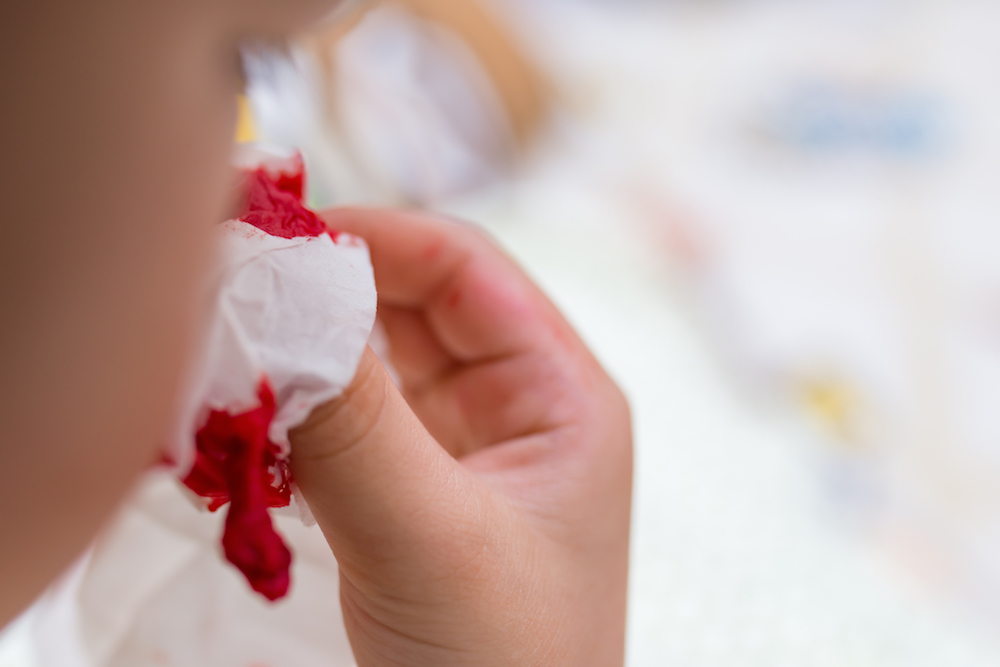
Image Source
The nose is an incredibly vascular structure, and the Kiesselbach’s plexus in the front part of the nose is the most common site for epistaxis, or nosebleeds, in children.
Epistaxis can result from trauma to the nose, mucosal irritation, inflammatory disease and septal or vasculature abnormality. In adults, hypertension (high blood pressure) can also contribute to nosebleeds. This is rare in children.
It’s important to remember that children with bleeding disorders are often at risk for recurrent nosebleeds. On the other hand, nosebleeds in children with no symptoms of bleeding disorders (easy bruising, family history) don’t require further investigation or testing.
Most of the time, bleeding occurs after trauma to the nose from placement of fingers in the nostrils. Additionally, allergies and infection can introduce crusty mucus and nasal itchiness, prompting injury to the mucosa when trying to remove the mucus.
How do I manage a nosebleed at home?
Epistaxis is typically self-limited, and the best bleeding control is achieved by applying pressure over the affected area. It’s important to tip the head forward instead of leaning the head back, which will cause blood to run down the throat and can further lead to nausea and airway obstruction.
It’s recommended to pinch the soft, front part of the nose, without stopping, for 10 minutes while breathing through the mouth. It’s critical to hold pressure without stopping, and these steps might need to be repeated. Decongestant nasal spray (i.e. Afrin) can be used to promote the vasoconstriction and might help stop the bleeding.
If the bleeding doesn’t stop, we recommend seeking help from a medical professional.
How can I prevent future nosebleeds?
Avoid blowing and rubbing of the nose, and try sneezing with the mouth open. Using nasal saline sprays can help keep the inside of the nose moisturized, and petroleum jelly can be used as lubrication. In addition, an at-home humidifier can help by adding moisture to the air, especially in dry climates and during winter when home heating systems are used more regularly.
What do I do if the nosebleeds are recurrent?
If your child is suffering from recurrent nosebleeds, seek evaluation from an otolaryngologist. Sometimes, antibiotic ointment is required to reduce infection and promote lubrication and healing. If dilated blood vessels are seen, chemical cautery can seal the area. In necessary cases, nasal electrocautery is performed under general anesthesia.
If you’re interested in making an appointment with Texas Children’s Otolaryngology Division, feel free to give us a call at 832-822-2778.

